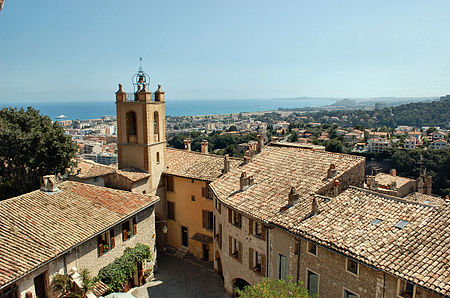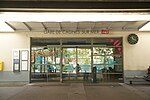Cagnes-sur-Mer
Communes of Alpes-MaritimesPages with French IPAPages with disabled graphs

Cagnes-sur-Mer (French pronunciation: [kaɲ syʁ mɛʁ], literally Cagnes on Sea; Occitan: Canha de Mar) is a French Riviera town near Nice that is in the Alpes-Maritimes department, in the Provence-Alpes-Côte d'Azur region, in southeastern France.
Excerpt from the Wikipedia article Cagnes-sur-Mer (License: CC BY-SA 3.0, Authors, Images).Cagnes-sur-Mer
Montée Sainte-Luce, Grasse
Geographical coordinates (GPS) Address Nearby Places Show on map
Geographical coordinates (GPS)
| Latitude | Longitude |
|---|---|
| N 43.6644 ° | E 7.1489 ° |
Address
Montée Sainte-Luce 4
06800 Grasse
Provence-Alpes-Côte d'Azur, France
Open on Google Maps







